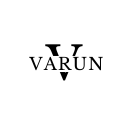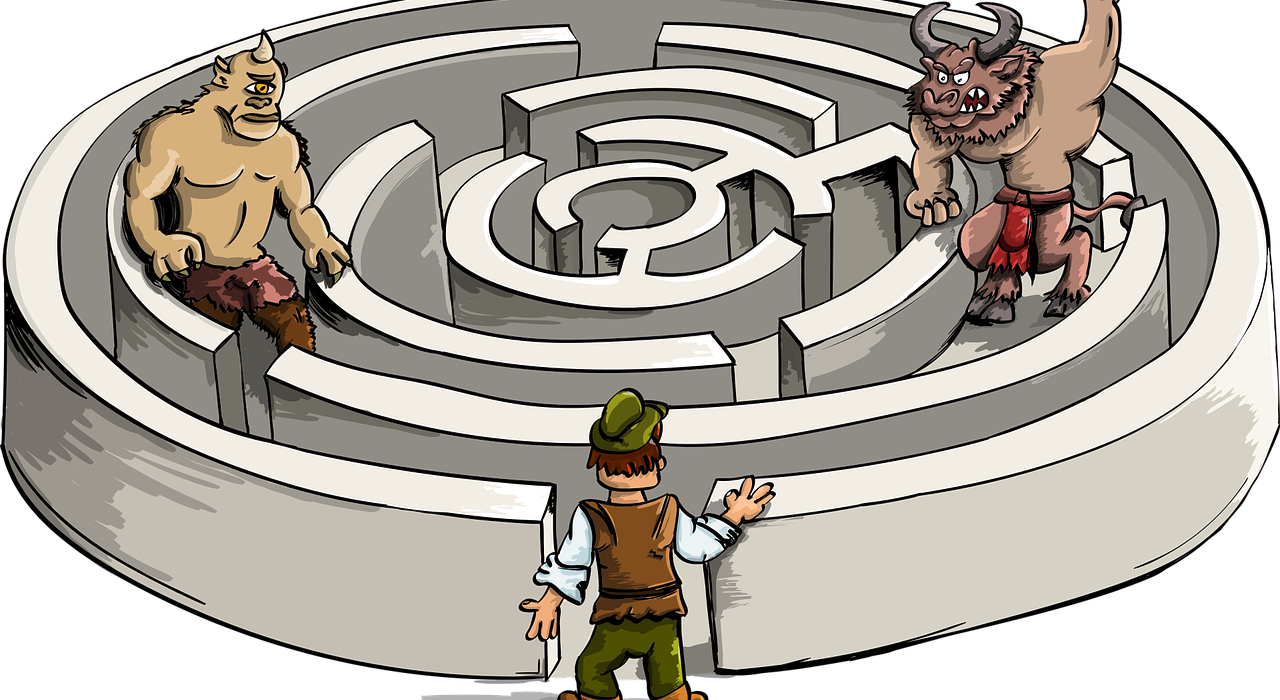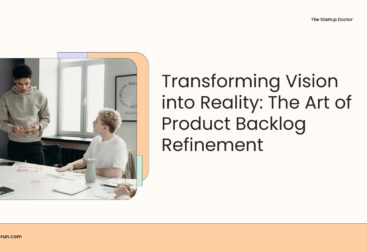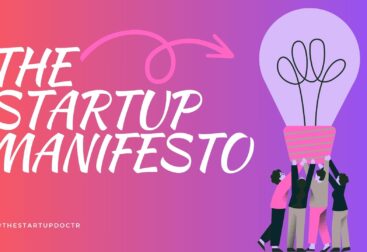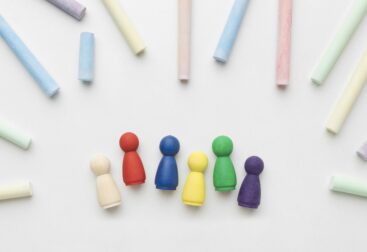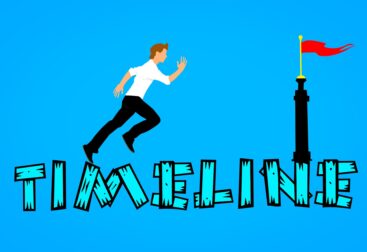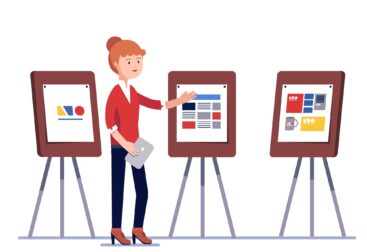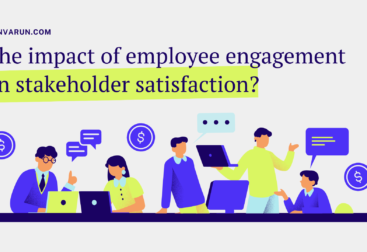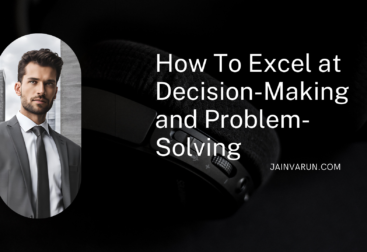In the fast-paced world of product development, where the lifecycle of a product can be unpredictable, one crucial phase often determines its success or failure: Product Discovery. This phase is the bedrock upon which innovative, user-centric products are built. Product discovery isn’t just a step in the development process; it’s an art form that requires creativity, empathy, and rigorous analysis. In this article, we will explore the essential stages of product discovery, focusing on ideation, market research, and user validation, while also incorporating practical examples, methods, and frameworks.
1. Understanding Product Discovery
Product Discovery is the process of determining what product to build, who to build it for, and how to ensure it solves a real problem. The goal is to reduce uncertainty before development begins by understanding the market, users, and the problem space. This process involves a series of activities designed to explore and validate ideas before they move into development.
A common misconception is that product discovery is only necessary for startups or new products. In reality, even established companies must continuously engage in product discovery to innovate and keep up with changing market demands.
Case Study: Airbnb’s Discovery Journey
Consider Airbnb, a platform that allows people to rent out their homes or find short-term lodging. The idea for Airbnb emerged when the founders, Brian Chesky and Joe Gebbia, were struggling to pay their rent. They noticed a design conference was coming to town, and all the hotels were fully booked. They decided to rent out air mattresses in their apartment and provide breakfast to attendees, coining the idea of “Air Bed & Breakfast.”
The initial ideation was simple, but what followed was a deep product discovery process. They validated the need by running small experiments, iterating on their offering, and understanding the real pain points of travelers and hosts. This discovery phase laid the groundwork for what Airbnb is today—a billion-dollar company disrupting the hospitality industry.
2. The Ideation Phase: Sparking Creativity
Ideation is the first step in product discovery and involves generating a wide range of ideas that could potentially solve a problem or meet a need. It’s a creative process that draws from various sources, including user feedback, market trends, competitive analysis, and internal brainstorming sessions.
Techniques for Effective Ideation
- Brainstorming: This is a classic technique where team members come together to generate ideas without judgment. The goal is to create a safe environment where creativity can flow, and no idea is too wild. A practical tip for successful brainstorming is to focus on quantity over quality in the initial stages—this encourages out-of-the-box thinking.
- Mind Mapping: Mind mapping helps teams visualize the relationship between different ideas. It starts with a central concept and branches out into related ideas, creating a visual map of potential solutions. This method is particularly effective in uncovering connections between disparate ideas.
- SCAMPER: SCAMPER is an acronym that stands for Substitute, Combine, Adapt, Modify, Put to another use, Eliminate, and Reverse. It’s a structured brainstorming technique that encourages you to think about how existing products or ideas can be modified to create something new.
- Crazy Eights: This is a rapid ideation method used in design sprints. Participants are given eight minutes to sketch eight different ideas. The time constraint forces quick thinking and helps generate a large volume of ideas quickly.
Example: Ideation at Google
Google is known for its culture of innovation, and one of its famous ideation practices is the “20% time” policy. This policy allows employees to spend 20% of their time working on projects they’re passionate about, even if these projects are not part of their job description. Many of Google’s successful products, like Gmail and Google News, originated from this ideation process.
3. Market Research: Grounding Ideas in Reality
After generating a plethora of ideas, the next step in product discovery is market research. This phase involves evaluating the feasibility of ideas by understanding the market landscape, identifying target users, and analyzing competitors.
Steps in Market Research
- Define the Target Market: Clearly define who the potential users are. Understanding demographics, psychographics, and behavioral patterns helps in crafting a product that meets specific needs. Tools like personas and empathy maps are often used in this step to create detailed profiles of potential users.
- Competitor Analysis: Analyze the existing solutions in the market. What are their strengths and weaknesses? Are there gaps that your product can fill? Understanding the competitive landscape helps in positioning your product uniquely.
- Market Trends: Stay updated with the latest market trends and technological advancements. Tools like Google Trends, industry reports, and social listening can provide insights into emerging trends that could influence your product.
- Surveys and Interviews: Engage directly with potential users through surveys, interviews, and focus groups. This qualitative data provides deeper insights into user needs, pain points, and behaviors.
Frameworks for Market Research
- SWOT Analysis: This framework helps in identifying the Strengths, Weaknesses, Opportunities, and Threats related to a product idea. It provides a holistic view of the internal and external factors that could impact your product.
- Porter’s Five Forces: This framework assesses the competitive environment by analyzing five key forces: competitive rivalry, the threat of new entrants, the threat of substitutes, bargaining power of buyers, and bargaining power of suppliers.
Example: Tesla’s Market Research for Electric Vehicles
When Tesla decided to enter the electric vehicle market, it wasn’t the first company to do so. However, its market research identified several key insights: the existing electric vehicles were either too expensive or lacked performance, the infrastructure for charging was inadequate, and there was a growing consumer awareness of environmental issues. By addressing these gaps, Tesla positioned itself as a leader in the electric vehicle market, offering high-performance cars with an extensive charging network.
4. Prototyping: Bringing Ideas to Life
Once the market research validates the feasibility of an idea, the next step in product discovery is prototyping. A prototype is a preliminary version of the product, used to test and refine the concept. It allows teams to experiment, gather feedback, and iterate before moving into full-scale development.
Types of Prototypes
- Low-Fidelity Prototypes: These are simple and often created with basic tools like paper sketches or wireframes. They’re quick to produce and useful for initial feedback and ideation sessions.
- High-Fidelity Prototypes: These are more detailed and interactive, often created using digital tools like Adobe XD, Sketch, or Figma. High-fidelity prototypes are closer to the final product and are used for more in-depth user testing.
- Interactive Prototypes: These are digital prototypes that mimic the user experience of the final product. They are used to simulate user interactions and are particularly valuable in testing usability.
Example: Dropbox’s MVP Prototype
Before building Dropbox, a full-fledged file storage and sharing service, its founder Drew Houston created a simple explainer video as a prototype. The video demonstrated the product’s value proposition without any actual code behind it. This video was shared with potential users to gauge interest and collect feedback. The overwhelming positive response validated the concept, allowing Dropbox to move forward with development.
5. User Validation: Testing and Iterating
User validation is the final and perhaps most critical phase in product discovery. This stage involves testing the prototype with real users to gather feedback, understand their experience, and identify any issues that need to be addressed. The goal is to ensure that the product solves the intended problem and provides value to users.
Methods of User Validation
- Usability Testing: This involves observing users as they interact with the prototype. The focus is on identifying usability issues, understanding how users navigate the product, and determining whether the product meets their expectations.
- A/B Testing: A/B testing involves creating two versions of a product (or feature) and testing them with different user groups. This method helps in identifying which version performs better and why.
- Surveys and Feedback Forms: After users interact with the prototype, surveys and feedback forms can be used to gather qualitative and quantitative data. This feedback is crucial for understanding user satisfaction and identifying areas for improvement.
- Analytics and Metrics: Tracking user behavior through analytics provides insights into how users engage with the product. Metrics such as conversion rates, drop-off points, and time spent on features can help refine the product further.
Example: Instagram’s User Validation
Instagram, initially launched as a location-based social network called Burbn, went through a significant user validation phase. The founders, Kevin Systrom and Mike Krieger, noticed that users were primarily using the app to share photos. They stripped away most features and focused on photo-sharing and filters, which were validated through user feedback. This focus on user validation led to the streamlined Instagram experience that millions of people use today.
6. Continuous Discovery: A Never-Ending Journey
Product discovery doesn’t end once the product is launched. In fact, it’s a continuous process that should be embedded in the product lifecycle. Market conditions change, user needs evolve, and new competitors emerge. To stay ahead, product teams must engage in continuous discovery—regularly revisiting the product to ensure it remains relevant and valuable.
Continuous Discovery Techniques
- User Feedback Loops: Create mechanisms for ongoing user feedback. This could be through in-app surveys, customer support interactions, or community forums. Continuous feedback helps in identifying new opportunities and areas for improvement.
- Iterative Development: Adopt an iterative approach to product development, where new features or improvements are released in small increments. This allows for regular user testing and validation, ensuring that each iteration is aligned with user needs.
- Data-Driven Decision Making: Leverage analytics and data to make informed decisions. By continuously monitoring key metrics, teams can identify trends, spot potential issues, and make proactive adjustments.
Example: Netflix’s Continuous Discovery
Netflix is a prime example of a company that excels in continuous discovery. Initially a DVD rental service, Netflix pivoted to streaming as market conditions changed. The company continuously iterates on its product, using data to personalize content recommendations, introduce new features, and optimize the user experience. This commitment to continuous discovery has helped Netflix remain a dominant player in the entertainment industry.
7. Tools and Frameworks for Effective Product Discovery
To navigate the complexities of product discovery, several tools and frameworks can be utilized:
- Design Thinking: A user-centered approach that emphasizes empathy, ideation, and experimentation. It’s particularly useful in understanding user needs and generating creative solutions.
- Lean Startup: A methodology that advocates for building a Minimum Viable Product (MVP), testing it in the market, and iterating based on feedback. The focus is on reducing waste and maximizing learning.
- Customer Development: A process that involves deeply understanding customers and validating their needs before building a product. It aligns closely with Lean Startup principles.
- Jobs to Be Done (JTBD): A framework that shifts the focus from what a product is to what job it helps the user accomplish. This perspective helps in identifying unmet needs and designing products that fulfill them.
- Persona Development: Creating detailed user personas based on research helps in keeping the product discovery process aligned with user needs. Personas represent the key segments of your target audience and guide decision-making throughout the discovery process.
- Empathy Maps: These are visual tools that help teams understand the emotional and cognitive aspects of the user experience. Empathy maps capture what users say, think, feel, and do, providing a holistic view of their needs and motivations.
8. Challenges in Product Discovery
Despite its importance, product discovery is not without challenges. Some of the common obstacles include:
- Biases and Assumptions: Teams often fall into the trap of confirmation bias, where they look for information that supports their preconceived ideas. Overcoming this requires a conscious effort to remain objective and open to feedback.
- Limited Resources: Especially in startups or small teams, resources for thorough market research and user validation may be limited. Prioritizing key activities and leveraging low-cost tools can help mitigate this.
- Stakeholder Alignment: Aligning all stakeholders around a single vision can be challenging, particularly in larger organizations. Regular communication, clear documentation, and involving stakeholders in the discovery process can help in achieving alignment.
- Speed vs. Thoroughness: There’s often pressure to move quickly, which can lead to shortcuts in the discovery process. Balancing speed with thoroughness is crucial to avoid costly mistakes down the line.
9. Conclusion: Mastering the Art of Product Discovery
Product discovery is both an art and a science. It requires a delicate balance between creativity and analysis, empathy and objectivity, vision and validation. By mastering the foundational steps of ideation, market research, prototyping, and user validation, product teams can significantly increase their chances of building products that truly resonate with users.
The success of companies like Airbnb, Tesla, Dropbox, Instagram, and Netflix underscores the importance of a robust product discovery process. These companies didn’t just stumble upon great products; they discovered them through a rigorous process of exploration, validation, and iteration.
For product managers, designers, and entrepreneurs, understanding and practicing the art of product discovery is not just a skill—it’s a competitive advantage. In a world where user needs are constantly evolving, and markets are ever-changing, the ability to discover, validate, and iterate on ideas is what separates successful products from the rest. By embracing continuous discovery and remaining attuned to the needs of users, teams can create products that not only succeed in the market but also make a lasting impact.
10. Next Steps: Applying Product Discovery in Your Organization
To begin applying product discovery in your organization, consider the following steps:
- Educate Your Team: Ensure that everyone involved in product development understands the importance of product discovery and is equipped with the necessary tools and knowledge.
- Create a Discovery Culture: Foster a culture that encourages experimentation, values user feedback, and embraces failure as a learning opportunity.
- Integrate Discovery into Your Process: Make product discovery an integral part of your product development process, rather than a one-time activity.
- Leverage Technology: Use tools like user analytics, A/B testing platforms, and prototyping software to streamline and enhance your discovery process.
- Stay Agile: Be prepared to pivot or adjust your product based on new insights and market changes. Flexibility is key in navigating the dynamic landscape of product development.
By embedding these practices into your organization, you can ensure that your product discovery process is not only effective but also a driving force behind your product’s success.
